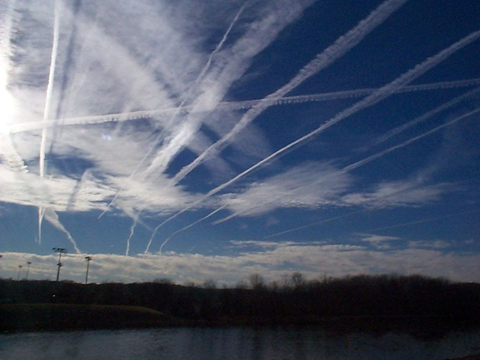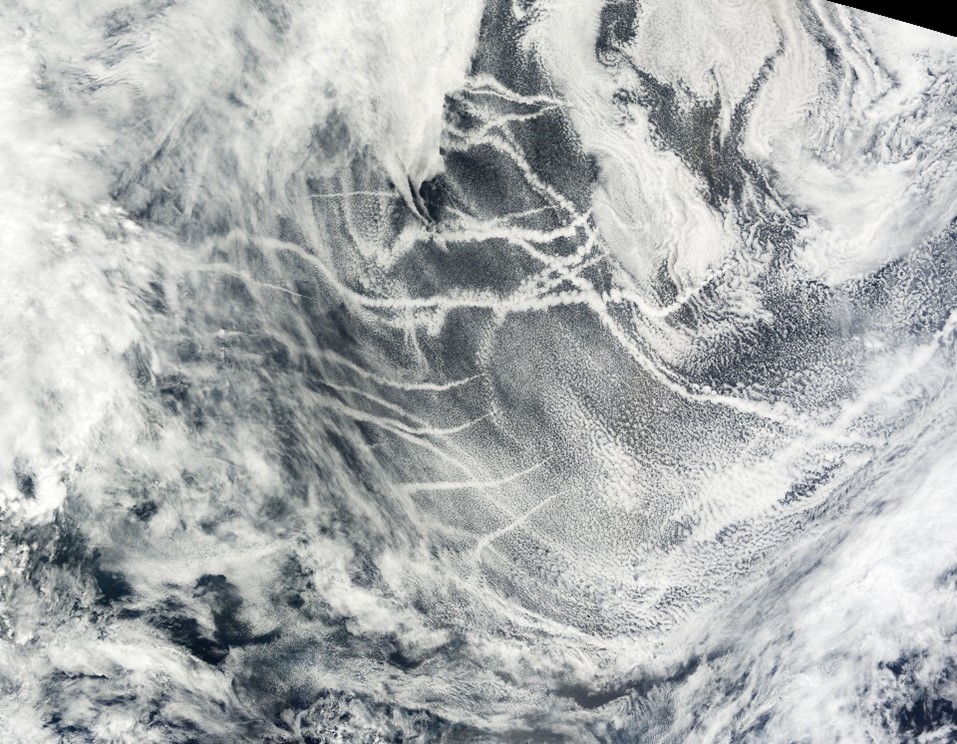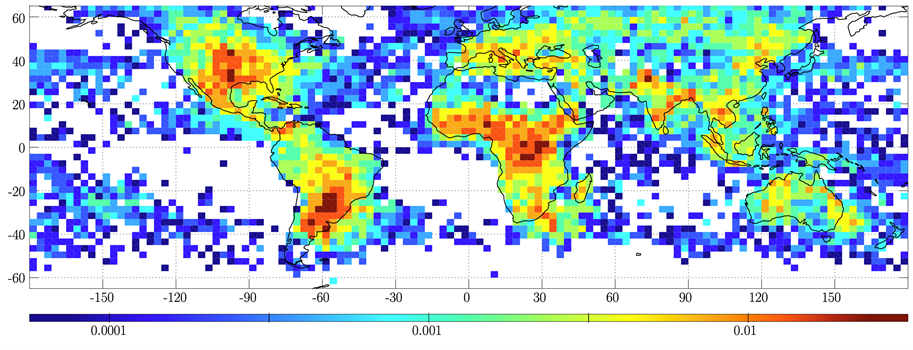
News and Media
Aerosol-cloud-precipitation interactions

Interactions between aerosols, clouds, and precipitation are the most uncertain mechanism by which human activities feedback onto the Earth’s energy budget.

Given that about two-thirds of the planet is cloudy at any given moment, understanding and quantifying aerosol-cloud-precipitation interactions is critical to producing more accurate climate predictions.
Aerosols directly affect the energy cycle by scattering sunlight, which can be seen as haze. Indirectly, aerosol particles affect the Earth’s climate by acting as the seeds on which clouds form. More aerosol particles can lead to more, but smaller, cloud droplets. This changes the appearance of clouds, like brightness, but may also reduce the likelihood of rain.
The role of clouds in the Earth’s energy cycle is intricate. They have a cooling effect on the planet by reflecting sunlight back into space. Simultaneously, they contribute to atmospheric warming by absorbing thermal radiation from the Earth’s surface. The dominance of either cooling or warming depends primarily on factors such as cloud altitude, phase (water, ice, or mixed), and the physical properties, like size, of individual ice crystals or cloud droplets.
Aerosols directly affect the energy cycle by scattering sunlight, which can be seen as haze. The aerosols we release can alter the clouds that form around us, changing their brightness or the likelihood of rain. For example, clouds produced by ‘ship tracks’ form in the exhausts of large ships. These indirect effects on the energy and water cycles are highly uncertain as they are almost impossible to measure in a laboratory and very difficult to isolate in nature.

NCEO researchers at the universities of Oxford, Leicester, Reading and RAL Space are working together to better understand and quantify these aerosol-cloud-precipitation interactions by using:
- satellite imagery
- sampling on research flights
- monitoring at ground stations
One focus is on deep convective “anvil” clouds as these are a major source of extreme precipitation, including destructive hailstorms, while being susceptible to many conflicting aerosol-cloud interactions. At the University of Leicester, we developed tools to monitor extreme weather events at a global scale.

Projects and Funding
ESA’s Climate Change Initiative (CCI) has supported projects on aerosols and clouds since its inception, which now link to products produced by the Copernicus Climate Change Service (C3S).
Tools
- Global Precipitation Measurement (GPM) mission satellite (GPM Dual-frequency Precipitation Radar, GPM Microwave radiometer)
- ESA’s EarthCARE (Cloud, Aerosol and Radiation Explorer) mission
- Cloud and Precipitation Microphysical Retrievals from the EarthCARE Cloud Profiling Radar (C-CLD product)
- Optimal Retrieval of Aerosol and Cloud (ORAC) [link to https://github.com/ORAC-CC/orac]
- Sea and Land Surface Temperature Radiometer (SLSTR)
- Moderate Resolution Imaging Spectroradiometer (MODIS)
Contact
For further information contact Dr. Adam Povey (adam.povey@le.ac.uk) and Dr. Kamil Mroz (kamil.mroz@le.ac.uk)
Latest News and Events





